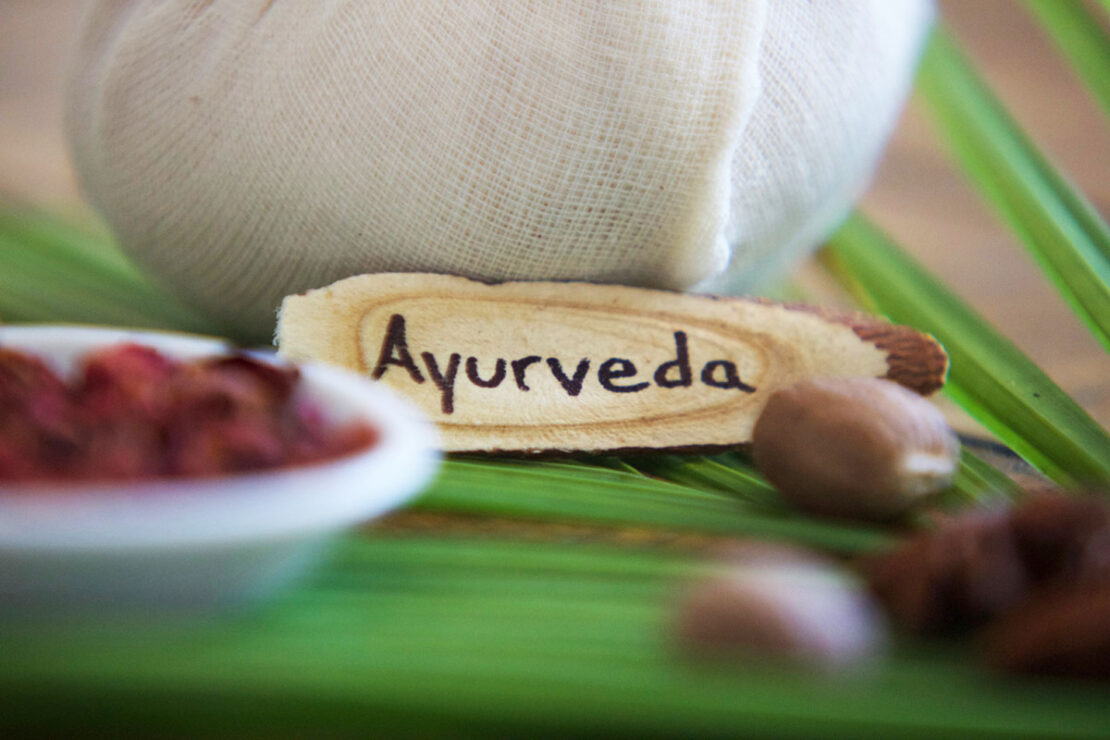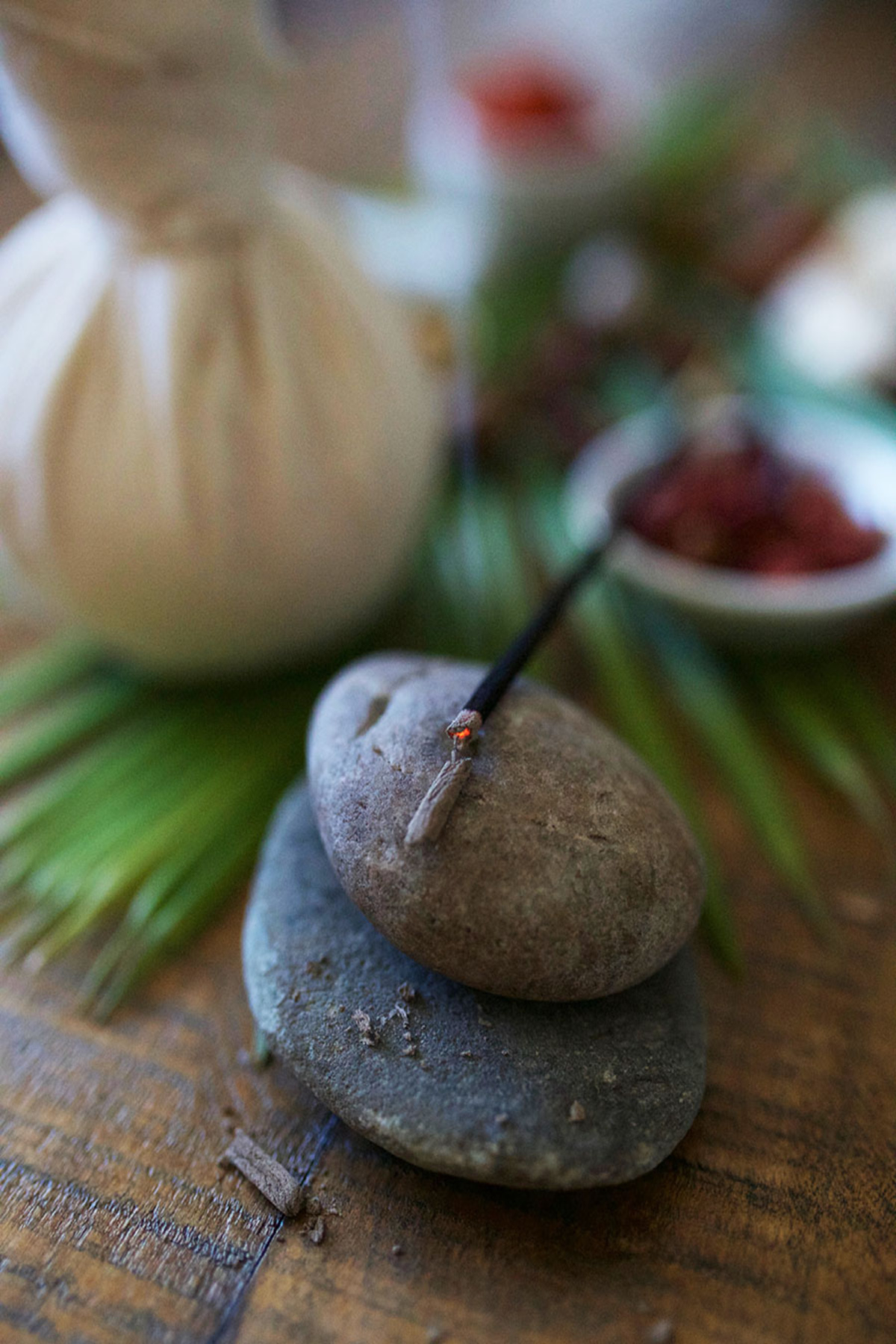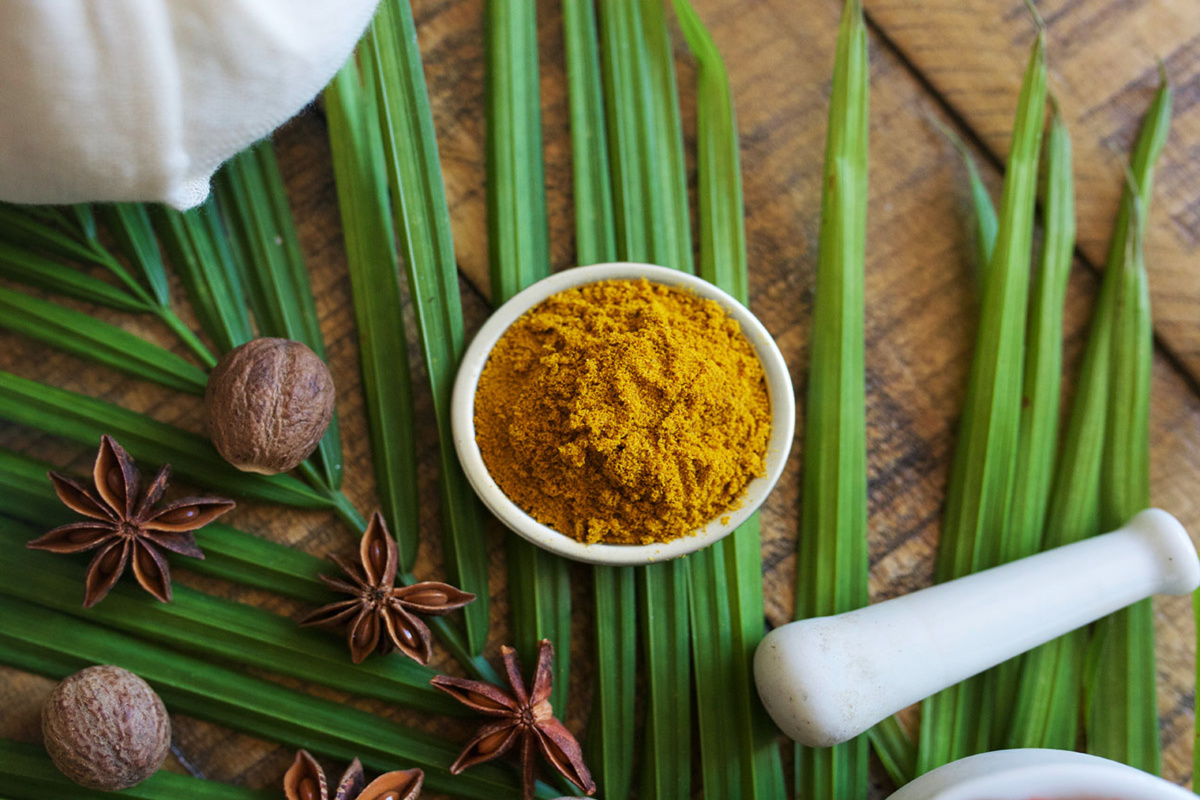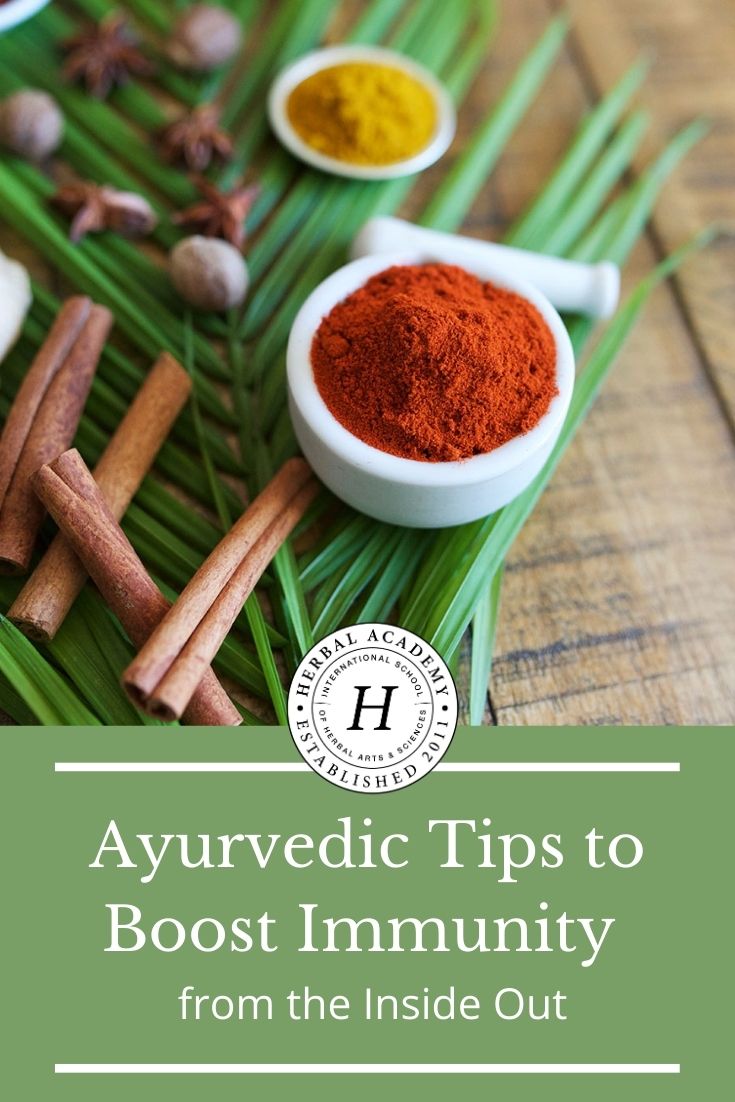
Ayurvedic Tips to Boost Immunity from the Inside Out
Maintaining a healthy immune system has become a high priority for a lot of folks in recent times. If you are inclined toward herbalism and natural approaches for immune boosting, you may turn to immunostimulants such as elderberry (Sambucus nigra) and garlic (Allium sativum), immunomodulants like astragalus (Astragalus mongholicus) and reishi (Ganoderma lucidum), and antimicrobials such as oregano (Origanum vulgare) and clove (Syzygium aromaticum). These herbal allies can be incredibly helpful, with immunostimulants, antivirals, and antimicrobials being especially supportive for the short-term. But what about immune support all year round? This article will explore how to boost immunity from the inside out, specifically looking at what you can do to keep your immune system and overall wellness tip-top in the “offseason.”
The Key Triad: Agni, Ama, and Ojas
I came to herbalism via Ayurveda, and Ayurveda continues to serve as the foundation that I build my herbal protocols upon. Whatever your approach to working with plant allies, getting to know this time-tested system can prove a useful perspective in guiding your wellness practices.
Three critical ayurvedic concepts to understand when talking about sickness and health are agni, ama, and ojas. In fact, when I meet with a new client, assessing the state of their agni, ama, and ojas will play a major role in guiding their ayurvedic plan. Where they stand with these three factors gives me an overall picture of the state of their wellbeing—and how long it may take for their health to improve.

Agni: Digestive Fire
You can read more about agni in my article Ayurvedic Guide To Building Digestive Power. Agni is basically one’s digestive fire or digestive power. According to ayurvedic doctor, teacher, and author Dr. Vasant Lad (1984) “Agni is the biological fire that governs metabolism” (p. 39). Ayurveda teaches that agni is contained within pitta dosha (Lad, 1984). The fire element is the dominant element within both agni and pitta. Those with a dominant pitta constitution tend to have a naturally strong agni. Nonetheless, maintaining a bright and balanced digestive fire is important for everyone, regardless of constitutional type.
Agni is so important because it is essentially our ability to receive nourishment and to expel wastes. When agni is weak or erratic, metabolic wastes will accumulate and nourishment will be compromised. Nutrients will not be effectively absorbed, immunity will be impaired, and longevity may be compromised (Lad, 1984). On the other hand, if agni is too strong, the digestive fire can burn up bodily tissues (known as dhatus), leading to a state of depletion, excess weight loss, and atrophy.

Ama: The Root of Illness
As previously mentioned, weakened or erratic agni leads to accumulation of ama. Ama is a unique ayurvedic term that is understood to be an undigested food matter. Ama begins to accumulate in the large intestine, and if left unchecked will eventually spill over into other body systems and the various channels of the body (srotamsi). This sticky, foul substance clogs the tissues (dhatus) and channels of the body, creating stagnation and compromising organic function (Lad, 1984). Ama weakens the immune system by dampening the agni of the tissues in which it accumulates. (Each dhatu/tissue has its own agni). If immunity is the ability to destroy harmful invaders, by compromising agni, ama diminishes that vital function.
Therefore, the first step in boosting immunity from the inside out is to balance agni and eradicate ama. Again, you can read about practical tips for maintaining a healthy agni in my article Ayurvedic Guide to Building Digestive Power. However, here are some overarching principles to bear in mind.
- Eat according to the seasons, keeping one’s constitution in mind.
- Eat mostly cooked foods.
- Avoid cold water and cold beverages. Warm or room temperature liquids are best.
- Eat enough to satisfy one’s hunger, but do not overeat.
- Eat in a peaceful setting.
- Avoid excessive snacking, as well as late-night eating.
When agni is functioning well and ama does not accumulate, then all the dhatus (bodily tissues) will be properly fed, and thereby ojas, the essential energy of the immune system will be supported.
Ojas: Vigor!
Ojas, literally translated as “vigor” is another uniquely ayurvedic term. It is key in boosting immunity at a deep level because it is our life sap and the essential energy of the immune system (Frawley, 2000). “[Ojas] is the subtle essence of the reproductive system and of all the vital secretions. It is the special Ayurvedic concept of a source fluid underlying all our physical capacities” (Frawley, 2000, p. 48). Ojas is somewhat difficult to comprehend because it is not so much a physical substance as it is an underlying energy–a fountain of vitality. On a subtle level, its home is the heart chakra; ample ojas gives rise to health, longevity, and immunity. Deficient ojas leads to illness and eventually death (Frawley, 2000).
Ample ojas will be recognized as resistance to illness, physical strength, a brightness to the eyes and complexion, efficient digestion, and a clear mind (Pole, 2013). Each person is born with a certain inherent level of ojas. However, ojas can only be built after all the bodily tissues are fed.

Making Deposits in the Ojas Bank
So, maintaining healthy ojas is truly the key to boosting immunity—and pivotal for a long and healthy life for that matter! How is ojas built and maintained? Let’s take a look at some key practices and principles.
To understand how to build and protect ojas, it is helpful to know what depletes it. If you think of ojas like resources on reserve, these are some ways in which those resources are depleted (Frawley, 2000).
- Overwork
- Excessive stress
- Drugs and overuse of stimulants
- Devitalized food
- Excessive sexual activity (per one’s constitution and state of health)
- Living out of rhythm with nature’s cycles (seasonal patterns and circadian rhythms)
If you want to protect the ojas that you’ve got and even build upon it, look at the list above and do the opposite! The following practices are akin to making deposits in the ojas bank:
- Take adequate time to rest and recover from work.
- Minimize excessive stress when possible (get support as needed and practice self-care).
- Avoid drugs, stimulants, and highly processed foods.
- Engage in intimacy in ways that feel nourishing rather than depleting.
- Awaken and sleep in accordance with the seasons and natural patterns of light and dark (such as awakening with the sun if possible and sleeping when it’s dark out).
- Eat with the seasons.
In addition to lifestyle practices, there are special foods and herbs that build ojas. However, without making lifestyle adjustments, building ojas through foods and herbs alone will be like swimming upstream—or having a crack in your ojas piggy bank! Milk, ghee, dates, and almonds are some of the foods that specifically nourish ojas (Frawley, 2000). If you don’t eat dairy, you can indeed maintain healthy ojas levels. However, for vegans, it is especially important to make sure that your diet has a good balance of tonifying versus purifying foods. This is true for everyone, but something to keep in mind in particular if you have a predominantly vata constitution and also if you eat a plant-based diet; both those factors tend to create lightness.
Foods that are nourishing and tonifying are characterized by the sweet taste. Examples include urad dal, milk, ghee, most meats, eggs, almonds, walnuts, coconut, leeks, cooked onions, many sweet fruits, and oats (Lad & Lad, 1994). These foods have at least some sweetness in the initial taste, and more importantly have an overall nourishing, building effect on the body. Including these foods regularly is important for making deposits in the ojas bank.

Balancing Agni and Ojas
Of course, it’s all about balance. While it is essential to protect ojas in order to boost immunity, agni and ama must also be managed. Ojas-building foods tend to be on the heavier side, and one’s agni (digestive fire) needs to be able to keep up with the load. Therefore, individuals with a strong agni can handle heavier foods, and in fact they will require heavier foods in order to keep up with their metabolic demands. Those with a more delicate or erratic digestion may need to limit heavy foods—and balance those foods with digestive spices such as ginger, cinnamon, black pepper, turmeric, cumin, coriander, and cardamom.
The main thing is to observe the state of agni, ama, and ojas and to then make adjustments accordingly. Since ama is one of the root causes of illness, preventing its accumulation is key. Signs of ama accumulation include (Frawley, 2000):
- A thick coating on the tongue
- Foul breath (especially if this persists after brushing one’s teeth)
- Low or irregular appetite
- Feeling sluggish
- Irregular bowel movements and stools that are not formed
Optimal wellness is a fine balance and Ayurveda is certainly not one-size-fits-all. If any of the above signs of ama accumulation start to appear, it is best to focus on gentle purifying practices (eating a higher proportion of light, spicy, and bitter foods and herbs) and then to add in sweet, ojas-building foods and herbs once the agni is burning bright.
There are a number of herbs that specifically support ojas. Among them are ashwagandha (Withania somnifera) root, guduchi (Tinospora cordifolia) stem, and shatavari (Asparagus racemosus) root (Frawley, 2000). These herbs are categorized as rasayanas in Ayurveda. Look out for my upcoming March post Herbs for Deep Nourishment for more info on nourishing rasayanas!
In Closing,
Learning to observe your own agni, ama, and ojas and to adjust diet and lifestyle practices accordingly, will be a huge step in boosting your immunity and vitality from the inside out!
For more information about natural immune support, see:
Mushroom Immunity Broth with Astragalus and Calendula
Pantry Herbalism for Cold & Flu Support (FREE EBOOK!)
5 Tips to Help Ward Off and Manage a Viral Illness with Herbs

REFERENCES
Lad, V. (1984). Ayurveda: The science of self-healing: A practical guide. Twin Lakes, WI: Lotus Press.
Lad, U., & Lad, V. (1994). Ayurvedic cooking for self-healing. Albuquerque, NM: The Ayurvedic Press.
Frawley, D. (2000). Ayurvedic Healing: A comprehensive guide. Twin Lakes, WI: Lotus Press.
Pole, Sebastian. (2013). Ayurvedic medicine: The principles of traditional practice. London, UK: Singing Dragon.








